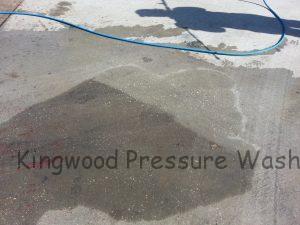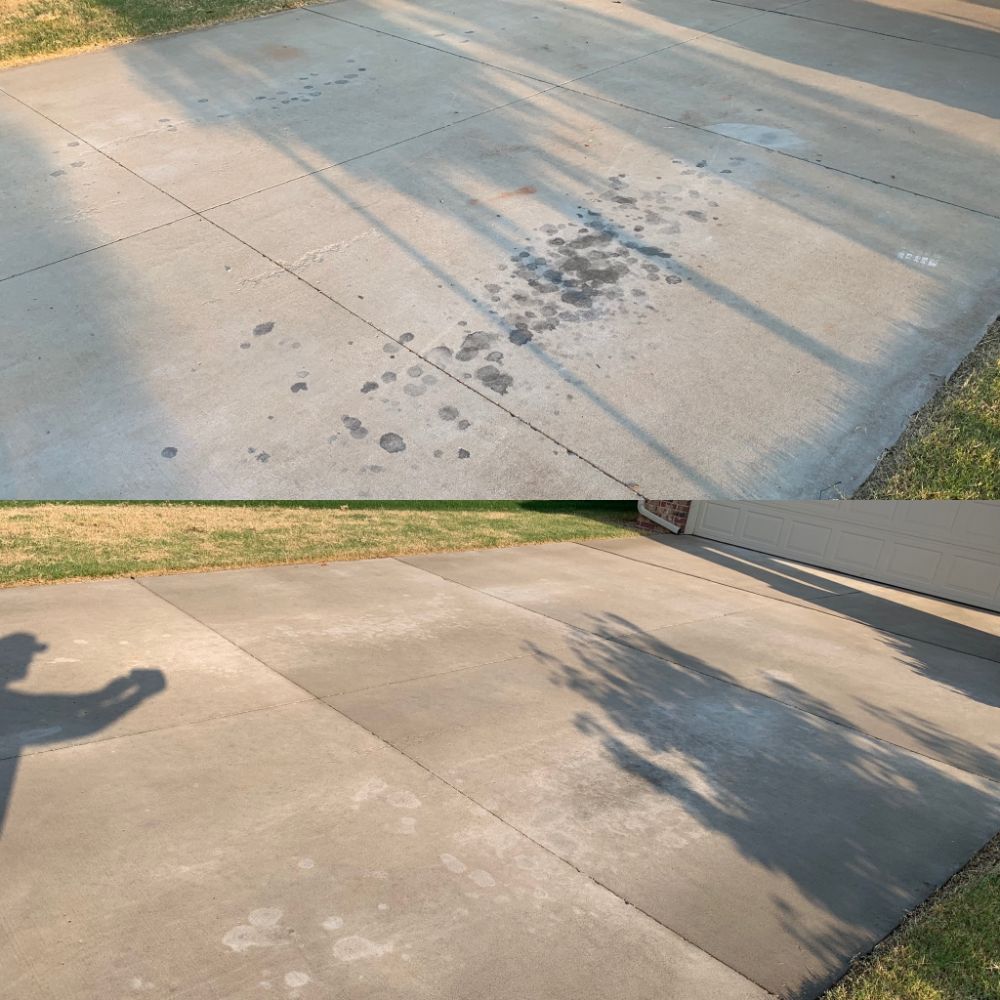Expert Strongsville Fleet Washing for Durable and Long-Lasting Results
Expert Strongsville Fleet Washing for Durable and Long-Lasting Results
Blog Article
Discover the most effective Techniques for Oil Stain Elimination From Concrete Surfaces
The existence of oil stains on concrete surfaces not just reduces aesthetic allure yet can also posture challenges for maintenance and security. Various methods exist for efficient elimination, varying from green natural services to potent commercial products, each suited to different intensity degrees of discolorations.
Comprehending Oil Discolorations
Oil stains on concrete can be a relentless difficulty for house owners and property supervisors alike. Understanding the nature of these spots is essential for efficient removal. Oil, whether from lorries, machinery, or various other resources, leaks right into the porous surface area of concrete, developing deep-set discoloration that can be unsightly and difficult to remove.
These stains vary in severity based on different factors, consisting of the kind of oil, duration of direct exposure, and specific concrete structure. Light oil spills may result in a surface tarnish, while much heavier oils can pass through extra deeply, making them more challenging to tidy. Additionally, ecological problems such as temperature level and humidity can impact how oil interacts with concrete, affecting the stain's determination.
Recognizing the characteristics of oil discolorations is important for choosing the proper cleaning technique. Lighter oils may respond well to absorbent materials, while heavier oils frequently require much more aggressive cleaning remedies. Comprehending these differences allows homeowner to tailor their cleaning method efficiently, guaranteeing that the picked method straightens with the particular kind of oil and stain extent. This knowledge ultimately improves the chances of effective oil discolor removal from concrete surfaces.

All-natural Cleansing Solutions
When resolving oil spots on concrete, many house owners seek eco-friendly choices to standard cleaning approaches. Natural cleansing options can be highly effective for taking on these stubborn spots while reducing environmental impact.
One preferred method involves utilizing baking soda, a versatile and non-toxic material. Sprinkling cooking soft drink over the oil stain and enabling it to sit for numerous hours will certainly help soak up the oil. Later, scrub the area with a rigid brush and rinse it with water.

In addition, pet cat clutter can act as an absorbent material, especially if the discolor is fresh. Spreading feline trash over the tarnish and enabling it to sit overnight can help extract the oil.
These all-natural techniques not only supply efficient oil discolor elimination yet additionally advertise a much healthier environment, making them optimal selections for diligent house owners.
Commercial Products Introduction
While all-natural cleaning solutions can effectively address oil discolorations, many home owners might prefer the ease and strength of business products particularly developed for this purpose. These items are formulated to permeate concrete surface areas and damage down oil stains a lot more efficiently than standard methods.
Commercial oil stain removers commonly contain effective solvents and cleaning up agents that target the oil at a molecular level. They commonly can be found in various forms, consisting of gels, powders, and fluids, allowing individuals to pick an item that finest fits their particular needs. Some solutions are designed for durable stains, while others appropriate for regular maintenance.
Along with traditional solvents, numerous industrial items include biodegradable elements, making them extra eco friendly selections. Customers must guarantee they pick an item that works with their specific concrete surface and adhere to producer instructions for optimal results.
Prior to using any kind of industrial cleaner, it is suggested to perform a spot examination in a discreet area to protect against potential discoloration. Inevitably, the right commercial product can dramatically streamline the oil tarnish elimination process, providing efficient remedies for preserving the appearance of concrete surfaces.
Step-by-Step Removal Refine
To properly eliminate oil discolorations from concrete, adhere to a systematic step-by-step procedure that makes More Info certain complete cleaning and repair - Oil Stain Removal in Strongsville. Begin by collecting needed materials, consisting of absorbing pads, a stiff-bristle brush, a degreasing representative, and a pressure washing machine if readily available
Beginning by applying an absorbent product, such as feline clutter or baking soft drink, straight onto the oil stain. Allow it to sit for at the very least 30 minutes to soak up the oil. Later, sweep away the absorbent product and dispose of it effectively.
Next, use a business degreaser or a combination of recipe soap and cozy water to the tarnished location. Let the service rest for 10-15 mins to penetrate the discolor. Scrub the area strongly with a stiff-bristle brush, making certain to work the solution into the concrete's pores.
Rinse the location thoroughly with water, ideally using a stress washer for far better results. Evaluate the stain; if residues persist, duplicate the degreasing process. Allow the concrete to dry completely prior to thinking about any type of safety actions or sealants to protect against future stains.
Stopping Future Stains
Avoiding future oil discolorations on concrete calls for positive procedures that resolve possible sources of contamination. One efficient method is to maintain a clean environment by regularly examining and keeping automobiles, machinery, and tools to avoid spills and leaks. Applying a routine look for oil leakages can substantially minimize the risk of unintended spots.

Sealing the concrete surface with a premium sealer is an additional precautionary procedure that improves resistance to staining - Oil Stain Removal in Strongsville. A sealer produces a protective layer that can protect against oil from passing through the concrete, making it much easier to cleanse up spills
Lastly, educating all individuals of the space regarding Read More Here appropriate procedures for dealing with oil and lubes can promote a society of obligation. By applying these methods, homeowner can efficiently mitigate the threat of future oil discolorations, protecting the stability and look of their concrete surfaces.
Final Thought
Finally, efficient oil tarnish elimination from concrete surfaces requires a comprehensive understanding of the discolor's nature and proper cleansing techniques. Both business and all-natural options supply feasible choices for addressing varying degrees of oil spots. Executing an organized removal process, adhered to by safety nets, adds to the longevity and honesty of concrete surfaces. Inevitably, a proactive strategy to maintenance will minimize the occurrence of future discolorations and preserve the visual and practical high qualities of concrete.
The presence of oil discolorations on concrete surface areas not only decreases aesthetic allure however can likewise position obstacles for maintenance and safety. Sprinkling baking soda over the oil discolor and allowing it to rest for a number of hours will certainly aid take in the oil.Business oil discolor eliminators typically include effective solvents and cleaning up agents that target the oil at a molecular degree.Avoiding future oil discolorations on concrete needs proactive procedures that resolve potential resources of contamination.In conclusion, reliable oil tarnish elimination from concrete surface areas requires a comprehensive understanding of the tarnish's nature and proper cleansing approaches.
Report this page